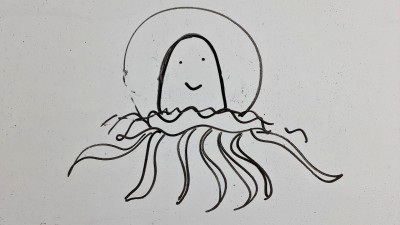Ask Singapore Homework?
Upload a photo of a Singapore homework and someone will email you the solution for free.

See 2 Answers
To find the coordinates of points \(X\) and \(Y\), we need to first find the slope of line \(PQ\), and then use that slope to find the equation of a line passing through \(P\) and perpendicular to \(PQ\).The slope of line \(PQ\) can be found using the formula:\[ m = \frac{{y_2 - y_1}}{{x_2 - x_1}} \]where \((x_1, y_1)\) and \((x_2, y_2)\) are the coordinates of two points on the line. In this case, \((x_1, y_1) = (1, 1)\) and \((x_2, y_2) = (3, -2)\).Substituting these values into the formula, we have:\[ m = \frac{{-2 - 1}}{{3 - 1}} = \frac{{-3}}{{2}} \]The negative reciprocal of the slope of line \(PQ\) will give us the slope of the line passing through \(P\) and perpendicular to \(PQ\). Therefore, the slope of the perpendicular line is:\[ m_{\perp} = -\frac{1}{{m}} = \frac{2}{3} \]Now, we can use the point-slope form of a linear equation to find the equation of the line passing through \(P\) and perpendicular to \(PQ\). The point-slope form is given by:\[ y - y_1 = m_{\perp}(x - x_1) \]Substituting the coordinates of \(P\) and the slope \(m_{\perp}\) into the equation, we get:\[ y - 1 = \frac{2}{3}(x - 1) \]Simplifying the equation, we have:\[ 3y - 3 = 2x - 2 \]\[ 2x - 3y = -1 \]Now, we need to find the coordinates of points \(X\) and \(Y\) on this line that are each \(2 \sqrt{13}\) units away from \(P\). We will consider the positive and negative distances separately.To find the coordinates of \(X\), we add \(2 \sqrt{13}\) to the x-coordinate of \(P\) and substitute it into the equation \(2x - 3y = -1\) to solve for \(Y\):\[ 2(x + 2\sqrt{13}) - 3Y = -1 \]\[ 2x + 4\sqrt{13} - 3Y = -1 \]\[ 2x - 3Y = -1 - 4\sqrt{13} \]Since this equation is the same as our original equation, we have a system of equations:\[ \begin{cases} 2x - 3y = -1 \\ 2x - 3Y = -1 - 4\sqrt{13} \end{cases} \]By subtracting the second equation from the first equation, we can eliminate \(x\) and solve for \(Y\):\[ -3y + 3Y = 4\sqrt{13} \]\[ Y - y = -\frac{4\sqrt{13}}{3} \]\[ Y = y - \frac{4\sqrt{13}}{3} \]Similarly, to find the coordinates of \(Y\), we subtract \(2 \sqrt{13}\) from the x-coordinate of \(P\) and substitute it into the equation \(2x - 3y = -1\):\[ 2(x - 2\sqrt{13}) - 3Y = -1 \]\[ 2x - 4\sqrt{13} - 3Y = -1 \]\[ 2x - 3Y = -1 + 4\sqrt{13} \]Again, this is the same equation as our original equation, and combining it with our first equation, we have:\[ \begin{cases} 2x - 3y = -1 \\ 2x - 3Y = -1 + 4\sqrt{13} \end{cases} \]By subtracting the second equation from the first equation, we can eliminate \(x\) and solve for \(Y\):\[ -3y + 3Y = -4\sqrt{13} \]\[ Y - y = \frac{-4\sqrt{13}}{3} \]\[ Y = y + \frac{-4\sqrt{13}}{3} \]Finally, substituting the coordinates of \(P\) \((1, 1)\) into the equations for \(X\) and \(Y\), we have:\[ X = (1 +
done
{{ upvoteCount }} Upvotes
clear
{{ downvoteCount * -1 }} Downvotes

Hello there. I have offered this solution to the same question from an esteemed enquirer. Hope this helps. Regards
Date Posted:
1 year ago





